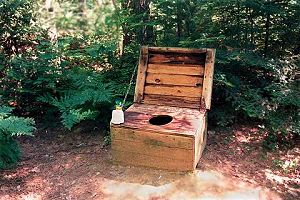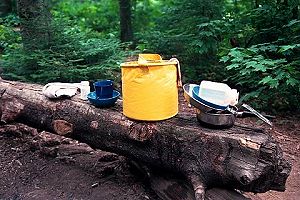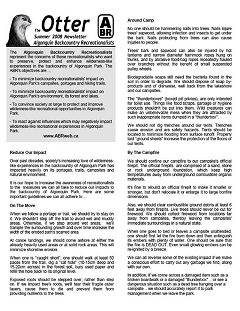Leave No TraceThe Principles of Leave No Trace
- Plan Ahead and Prepare For more details about LNT programs, please visit http://www.leavenotrace.ca. |
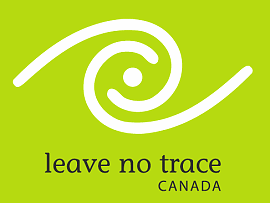
|
|
|
||
 |
The ABR has entered into a memorandum of understanding with Algonquin Provincial Park and The Friends of Algonquin Park regarding the education and promotion of Leave No Trace Canada principles in Algonquin Provincial Park. The parties agree to work collaboratively on educating the public by using a number of mediums, including print, internet and video. On matters of mutual interest, the parties agree to share information and knowledge of best practices in implimenting Leave No Trace principles in Algonquin Park. The parties will meet annually to review Leave No Trace programs, activities and products .. and to set priorities for the following year. This united effort will support an integrated and consistent approach to promoting and educating park visitors on the seven principles of Leave No Trace Canada. May 12, 2011 |
|
|
|
||
|
The ABR is proud to announce the online release of the "Backcountry Of Algonquin Park - Leave No Trace Outdoor Skills and Ethics" guidebook. It's an eleven page presentation, made in partnership with Leave No Trace Canada .. taking the reader through the seven principles of Leave No Trace, as they apply to Algonquin Park's backcountry and its unique circumstances. Algonquin's backcountry is a delicate network of wilderness-like lakes, watercourses, protected zones, watercourse setbacks, campsites, portages and trails. Polluted water, displaced wildlife, eroded soil, and trampled vegetation are just some of the impacts linked directly to recreational activities. Considerable damage could be prevented if all recreationalists were well informed, complied with regulations, and applied Leave No Trace skills and ethics. Please .. download it here April 12, 2010 |
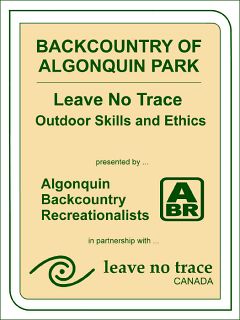 |
Reduce Our Impact
These are the ABR's original "Reduce Our Impact" guidelines, compiled over 2008 and 2009, prior to partnership with LNT.|
Camping Impacts
Shorelines The shorelines which we tend to impact most upon are those at campsites. Most of Algonquin's canoe route campsites have been established for many years and are characterized by expanses of exposed rock, gravel, sand and tree roots. In most cases, these materials were originally covered by forest soil and plants. The continual landings of canoes and the accompanying foot-traffic ashore have resulted in the compaction and erosion of the natural ground covers. Eventually such impact results in the death of some shoreline trees. We are often struck by the rugged rocky appearance of a campsite's shoreline. However, it is not usually a case of a naturally rugged spot being chosen for a campsite. What we are usually seeing is a damaged section of shoreline .. damaged by our own repeated use over the years and decades. We have only to look up and down the shoreline, beyond the immediate vicinity of such a campsite to see the original natural state of the shoreline. 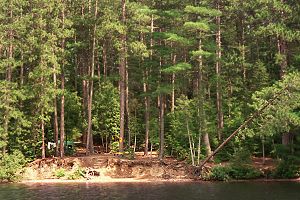
These impacted stetches of shoreline will take far longer to heal than the time taken to damage them. Unfortunately they have become a common mark of most canoe campsites. However, we can make a conscious effort to not impact on any more of the shoreline that remains in its original natural state. It may seem more convenient to land one's canoe at a shoreline shelf of vegetation-covered soil, rather than at the adjacent curved or sloped bare rock. However, this decision being made by years of visitors to a campsite will result in the stretch of denuded rock being extended more and more along the shoreline. Whenever we land our canoe at a campsite's shoreline, we should use a part of the already damaged section. By following this practice, we'll avoid damaging the adjacent natural shoreline. This practice will limit our impact on the remaining wilderness-like characteristics of the shoreline. Caring use of campsites' shoreline resources can even allow marginally impacted sections to re-establish some of their wilderness characteristics. One can view this attitude as somewhat parallel to showing respect for a gardener's flower beds by "staying on the paths".
While shorelines are the linear areas where the land meets the water, waterfronts are considered the area between the shoreline and the actual campsite. Sometimes they are comprised of a pronounced rocky, gravel or sandy rise from lake level. Other times they can be comprised of a vegetated area traversed by a foot-trail or two. Those waterfronts that have a pronounced rise up from the shoreline often show clear signs of erosion. Over the years, repeated ascents and descents by campers can destroy the integrity of these embankments. In these situations, the only low-impact option is to purposefully use the most durable component of the waterfront's embankment. This means choosing firm rock surfaces over loose gravel or sand portions of an embankment, for one's ascents and descents. In the same manner, avoid stepping on an embankment's vegetation, as it's roots hold the soil together and its leaves shield the soil from the erosive effect of rain. When such a campsite's waterfront embankment has eroded far enough back from the shoreline, it could conceiveably render the campsite unuseable by eating away at the tent areas and/or compromising the stability of trees. Those waterfronts that are comprised of an area of vegetation traversed by a foot-trail or two provide privacy, shelter and a natural habitat for birds and/or small mammals. The accepted low-impact practices in these cases are to keep to the established path(s) and to not damage the vegetation by laying canoes or other equipment over it. 
Campsites Campsites include the typically flatter areas where tents are pitched and associated camping activities are conducted. Tents should be set-up on the already bare areas, not laid on top of grass or ground cover. Tent and tarp ropes should be only tied to substantial larger tree trunks and branches .. and preferrably with low-abrasion wide straps or rubber strips .. so as to minimize impact on any soft bark. While cleaning away dead twigs and small rocks prior to pitching a tent is fine; cutting or trimming away live growth is definitely not appropriate. Likewise, gouging the ground to make "drainage ditches" around one's tent is also not a low-impact practice. Damage to vegetation and un-necessary ground erosion are two of the main causes for the barren areas of campsites "growing larger and larger". 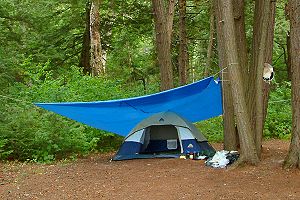
Campsites typically incorporate and/or are surrounded by a number of mature trees. They help supply the campsites with shade from the sun, shelter from the rain and blockage of the wind. These trees are doubly impacted by the camping public. Their roots are subject to the compaction and erosion of the soil around them, often leaving them increasingly exposed to the drying and cold elements. In addition to soil degradation, these trees are often directly abused by campers. Damaging impacts to campsite trees include scarring oil lanterns being hung on them, nails being driven into them, hatchets being impaled into and whacked against them, as well as bark and branches being pulled off them. The scarring and introduction of infections, along with the killing of sapwood result in many campsite trees either dying-back or dying outright much earlier than they should. When these trees die, the centers of many campsites are opened to the sun and rain. As a result, actual tent areas are relocated further back into the forest, enlarging campsites well beyond their original sizes. Unfortunately, when park staff have to come to cut down these dangerous dying and dead trees, they are faced with the additional danger of cutting tree trunks which have been effectively "spiked"with an assortment of nails over the years.
Fire pits have the potential of impacting Algonquin's backcountry well beyond the perimeters of their campsites. Official campsite firepits are either constructed on solid bedrock outcroppings or they are built upon a specially excavated sub-strata of sand and/or gravel. These special locations are designed to reduce the chance of underground fires, in which roots and/or other organic materials smolder and later erupt into forest fires. Under no conditions should a fire pit be "relocated", for this very reason. Likewise, there is no excuse for rebuilding a firepit to dimensions larger than those that tightly surround the standard legged grill that's supplied to each campsite. Even the use of an official campsite firepit still requires the observance of several safety measures. Extra dry and/or windy conditions are prudent reasons to either keep a fire very small or to preclude having one at all. All combustible forest litter should be raked back at least six feet away from a firepit in all directions. The penetrating soaking of a campfire with water is an absolute necessity when retiring to bed or when leaving a campsite. Every year, a number of backcountry campsites are heavily impacted or outright destroyed by the results of the careless use of fire pits.
Latrines A thunderbox is the unwalled, lidded latrine located a short distance from the vast majority of backcountry campsites. When located, maintained and used properly .. these facilities provide a sanitary means of dealing with toilet byproducts. It is a serious breach of health measures to dispose of one's toilet waste anywhere else in proximity of a campsite. Thunderboxes are intentionally located in areas with optimal depths of soil, set back from lakes and watercourses. These factors combine to prevent contaminants from seeping into bodies of water. Thunderboxes are repaired by park staff and, when they are "filled", they are relocated over newly dug holes. The only time one should consider moving one is to rotate it over its hole, so that its raised lid provides optimal privacy for its "user". It is common courtesy to lower its lid after use, so that the next user doesn't have to deal with a hord of attracted flies or a rain-soaked seat. In the unlikely instance of a fallen tree having landed on a thunderbox, the "last-resort alternative" is to dig or scrape a "cat-hole" in the soil and/or forest litter, far from water, the campsite and any associated trails. After depositing one's byproducts therein, cover it up with the previously displaced materials. This is the same technique that should be followed when hiking on trails, portages or at large in the backcountry. Wood Gathering The prime rule when gathering wood for the campfire is to not take any wood from live trees or bushes. Even a fallen tree shouldn't be cut if it continues to live. Individual pieces of deadfall collected from the forest floor are the best source of firewood. They are usually sap-free and of the right size to feed into a fire pit. Pairs of long straps serve well to bundle lengths of deadfall together and to carry them back to camp from a distance inland.
Some lazy people gleen their wood supply from the immediate vicinity of the campsites and beside shoreline trails by cutting dead upright trees and dead branches from live trees. This practice produces barren areas of stumps and voids in the forestscape .. reducing the natural characteristics of campsite and shoreline areas. Rather, the felling of deadwood shouldn't be done within 120 meters of shorelines (the same set-back recommended for logging by the Ontario Parks Board in their Dec. 8/06 report).
Dish Washing Under no circumstances should dishes be washed in lakes or rivers. Particles of food can easily contaminate lakeshore water and can promote the undesireable growth of weeds and algae. Only biodegradable soap should be used to wash dishes. Other cleansers won't breakdown in the soil and will eventually leach into the lakes and rivers, impacting negatively on the aquatic environment. If one doesn't travel with a large cooking pot (which can double as a wash-pan), one should use a heavyduty collapsible "vinyl bucket". Dishwater has the dangerous potential of attracting wildlife, so its disposal should be done inland .. well beyond both the campsite and the thunderbox.. April 4, 2008 (submitted by Barry Bridgeford) Reducing Impacts Over past decades, society's increasing love of wilderness- like experiences in the backcountry of Algonquin Park has impacted heavily on its portages, trails, campsites and natural environment. It is our hope to increase the awareness of recreationalists to the measures we can all take to reduce our impacts to the backcountry of Algonquin Park. Here are some important guidelines we can all adhere to ... On The Move When we follow a portage or trail, we should try to stay on it. We shouldn't step off the trail to avoid wet and muddy areas. Otherwise, if we step around wet areas, we'll trample the surrounding growth and over time increase the width of the eroded path's scarred area. At canoe landings, we should come ashore at either the already heavily used areas or at solid rock areas. This will minimize shoreline erosion. When one is "caught short", one should walk at least 50 paces from the trail, dig a "cat hole" (10-15cm deep and 15-20cm across) in the forest soil, bury used paper and refill the hole back to its original level. Exposed roots should be stepped over, rather than be stepped on. If we impact tree's roots, we'll tear their fragile outer layers, cause them to die and prevent them from providing nutrients to the trees. Around Camp No one should be hammering nails into trees. Nails injure trees' sapwood, allowing infection and insects to get under the bark. Nails protruding from trees can also cause injuries to people. Trees' bark and sapwood can also be injured by hot lanterns and narrow diameter hammock ropes hung on trunks, and by abrasive food-bag ropes repeatedly hauled over branches without the benefit of small suspended pulley wheels. Biodegradable soaps still need the bacteria found in the soil in order to degrade. We should dispose of soap by- products and of dishwater, well back from the lakeshore and our campsites. The "thunderboxes" (boxed pit privies), are only intended for toilet use. Things like food scraps, garbage or hygiene products shouldn't be put into them. Wild creatures can make an unbelievable mess when they are attracted by such inappropriate items dumped in a "thunderbox". We should not dig trenches around our tents. Trenches cause erosion and are safety hazards. Tents should be located to minimize flooding from surface runoff. Properly laid "ground sheets" increase the protection of the floors of our tents. By The Campfire We should confine our campfire to our campsite's official firepit. The official firepits are comprised of a sand, stone or rock underground foundation, which keep high temperatures away from underground combustible organic materials. It's fine to rebuild an official firepit to make it smaller or stronger, but don't relocate it or enlarge it to large bonfire dimensions. Also, we should clear combustible ground debris at least 6 feet away from firepits. Live trees should never be cut for firewood. We should collect firewood from locations far away from campsites, thereby leaving the campsites' immediate surroundings in a natural state. When one goes to bed or leaves a campsite unattended, one should first let the fire burn down and then extinguish its embers with plenty of water. One should be sure that the fire is DEAD OUT. Even small glowing embers can be re-ignited by a breeze. We can all reverse some of the existing impact if we make a conscious effort to carry out any garbage we find, along with our own. In addition, if we come across a damaged item such as a broken boardwalk or a damaged "thunderbox" .. or see a dangerous situation such as a dead tree hanging over a campsite .. we should accurately report it to park management when we leave the park. April 17, 2008 (submitted by Robert Withnell .. Impact & Upkeep Committee) |
||
2008 NewsletterIn early May of 2008, the ABR Steering Committee decided to release a compact one-page black-and-white newsletter in downloadable PDF format, for online distribution. It is a simple single-sided, letter sized sheet describing the ABR's objectives, indicating our website address and detailing some of the "Reduce Our Impact" guidelines. It can be folded twice (lengthwise and then widthwise ) to render it compact .. or even widthwise once again, to render it even more compact. ABR members and the general public are encouraged to download, print-up and photocopy additional copies so that they can take them on camping trips to share with friends and anyone else they may meet along the way. With the camping season already starting, it was considered appropriate to initially produce a small low cost item for informal outdoor distribution. This handout's content was developed by Robert Withnell, a member of the ABR Impact Committee. May 2, 2008 |
||
2009 NewsletterAs part of the ABR's first regular mail-out, registered Algonquin Backcountry Recreationalists members received membership cards, ABR bumper-stickers and a color-printed copy of the 2009 Otter Newsletter. PDF files of which can can be downloaded here ... Page 1 and Page 2. May 8, 2009 |
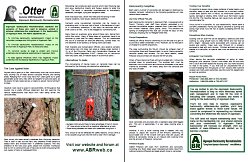
|
|




 Waterfronts
Waterfronts
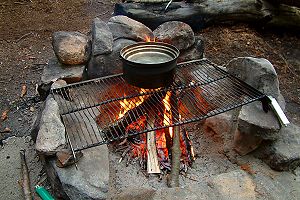 Fire Pits
Fire Pits
